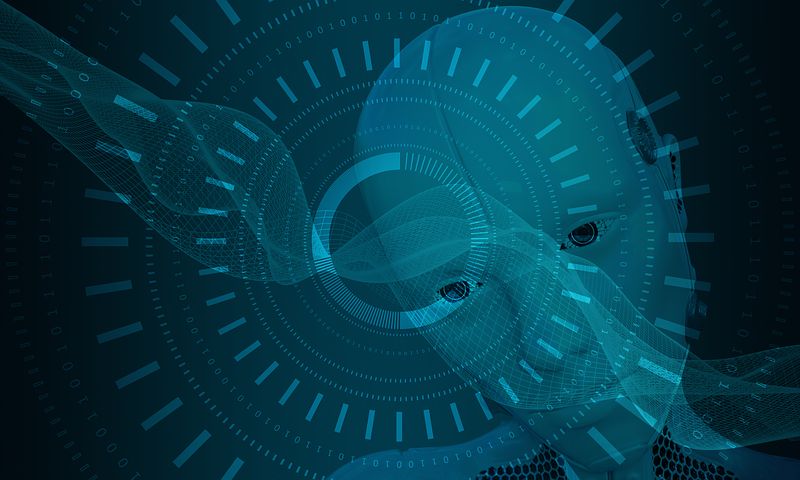Researchers from the Massachusetts Institute of Technology have figured out a way to better control and design soft robots to perform target tasks.
Copyright by www.unite.ai
 This has been a goal in soft-robotics for a long time, and it is a big accomplishment. Soft robots have flexible bodies that are capable of moving in an infinite number of ways at any given time. In regards to computation, this is a highly complex “state representation,” describing the movements of each part of the robot. These can possibly have millions of dimensions, which means that it is more difficult to calculate the best way for a robot to complete complex target tasks.
This has been a goal in soft-robotics for a long time, and it is a big accomplishment. Soft robots have flexible bodies that are capable of moving in an infinite number of ways at any given time. In regards to computation, this is a highly complex “state representation,” describing the movements of each part of the robot. These can possibly have millions of dimensions, which means that it is more difficult to calculate the best way for a robot to complete complex target tasks.
The MIT researchers will present a model at the Conference on Neural Information Processing Systems in December. The model is able to learn a compact, or “low-dimensional” state representation that is based on the physics of the robot, the environment, and other factors. The model is then able to co-optimize movement control as well as material design parameters, These are then aimed at specific tasks.
Andrew Spielberg is a graduate student in the Computer Science and Artificial Intelligence Laboratory (CSAIL).
“Soft robots are infinite-dimensional creatures that bend in a billion different ways at any given moment, but in truth, there are natural ways soft objects are likely to bend. We find the natural states of soft robots can be described very compactly in a low-dimensional description. We optimize control and design of soft robots by learning a good description of the likely states.”
In the simulations that took place, the model enabled 2D and 3D soft robots to complete the target tasks. The tasks included moving different distances and reaching target spots. The model was able to do these faster and more accurately than other current methods. The researchers now want to use the model in real soft robots.
Other individuals who worked on the project include CSAIL graduate students, Allan Zhao, Tao Du, and Yuanming Hu; Daniel Rus, director of CSAIl and the Andrew and Erna Viterbi Professor of Electrical Engineering and Computer Science; and Wojciech Matusik, an MIT associate professor in electrical engineering and computer science and head of the Computational Fabrication Group.
Thank you for reading this post, don't forget to subscribe to our AI NAVIGATOR!
Soft-robotics is a growing field that is extremely important within the larger scope of advanced robotics. Characteristics such as flexible bodies could play a role in safer interaction with humans, object manipulation, maneuverability, and much more.
During the simulations, an “observer” is responsible for the control of the robots. An “observer” is a program that computes variables that see the way the soft robot is moving in order to complete a task.
Eventually, the researchers developed a new “learning-in-the-loop optimization” method. All optimized parameters are learned during a single feedback loop that takes place over multiple simulations. At the same time, the method learns the state representation. […]
Read more – www.unite.ai


Researchers from the Massachusetts Institute of Technology have figured out a way to better control and design soft robots to perform target tasks.
Copyright by www.unite.ai
The MIT researchers will present a model at the Conference on Neural Information Processing Systems in December. The model is able to learn a compact, or “low-dimensional” state representation that is based on the physics of the robot, the environment, and other factors. The model is then able to co-optimize movement control as well as material design parameters, These are then aimed at specific tasks.
Andrew Spielberg is a graduate student in the Computer Science and Artificial Intelligence Laboratory (CSAIL).
“Soft robots are infinite-dimensional creatures that bend in a billion different ways at any given moment, but in truth, there are natural ways soft objects are likely to bend. We find the natural states of soft robots can be described very compactly in a low-dimensional description. We optimize control and design of soft robots by learning a good description of the likely states.”
In the simulations that took place, the model enabled 2D and 3D soft robots to complete the target tasks. The tasks included moving different distances and reaching target spots. The model was able to do these faster and more accurately than other current methods. The researchers now want to use the model in real soft robots.
Other individuals who worked on the project include CSAIL graduate students, Allan Zhao, Tao Du, and Yuanming Hu; Daniel Rus, director of CSAIl and the Andrew and Erna Viterbi Professor of Electrical Engineering and Computer Science; and Wojciech Matusik, an MIT associate professor in electrical engineering and computer science and head of the Computational Fabrication Group.
Thank you for reading this post, don't forget to subscribe to our AI NAVIGATOR!
Soft-robotics is a growing field that is extremely important within the larger scope of advanced robotics. Characteristics such as flexible bodies could play a role in safer interaction with humans, object manipulation, maneuverability, and much more.
During the simulations, an “observer” is responsible for the control of the robots. An “observer” is a program that computes variables that see the way the soft robot is moving in order to complete a task.
Eventually, the researchers developed a new “learning-in-the-loop optimization” method. All optimized parameters are learned during a single feedback loop that takes place over multiple simulations. At the same time, the method learns the state representation. […]
Read more – www.unite.ai
Share this: